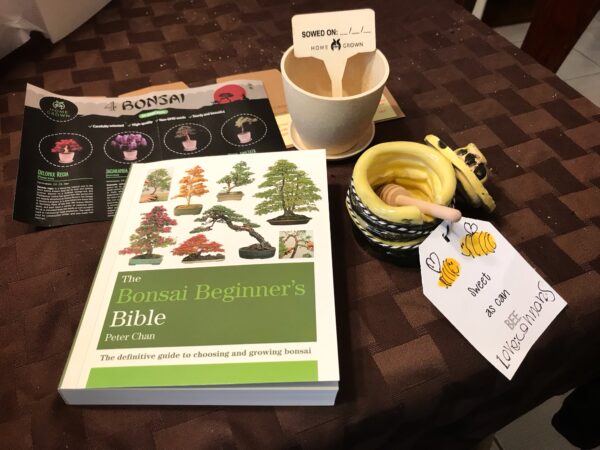I blame the YouTube algorithm. It served me up some videos from Herons Bonsai a few weeks back, and now I’m potting up Japanese maple seedlings that would normally be destined for my (currently non-existent) compost pile.
Earlier this week, I unearthed some thin florist wire and some aluminum craft wire from my stash (I’ve also got some heavyweight picture-hanging wire around here somewhere) and made a first attempt at wiring my tiny seedlings’ trunks into the S-shape of an informal upright bonsai.
Last night, I wired a couple of the other smaller seedlings that I had dug up — the ones that seem to be thriving in their new home, anyway.
Today is Mother’s Day… and look what my two favorite guys got me.
The bonsai-growing kit contains seeds of four different plants: two conifers and two deciduous trees, one of which is a flowering tree. I’m planning to start with germinating the Norway spruce, as the insert promises that it’s a fast-growing plant.
Now that I’ve been tending the same flowerbeds for eight years, though I’m starting to understand the Long Game. I get that there’s no silver bullet to instantly grow (and maintain) the perfect garden, border, tree, whatever. I’m starting to plan ahead for what the gardens will look like in a few years, leaving volunteer tree seedlings to mature alongside older, weaker specimens that are on their way out. I’m not in a hurry to buy new plants, or to pull up “weeds” that I don’t recognize. Now that my mind has starting thinking bonsai, I’m even contemplating the weed trees and unwanted runner plants as possible future bonsai.
I also get that every year can be a new start if it needs to be. Gardens and the plants in them are living things, always growing and changing. There will always be new volunteer seedlings to shape and nurture — or throw in the landfill.





